PET Basics | Uses for PET | PET Safety | Recycling & Sustainability
PET Basics
What is PET resin or PET?

PET, which stands for polyethylene terephthalate, is a form of polyester (just like the clothing fabric). It is extruded or molded into plastic bottles and containers for packaging foods and beverages, personal care products, and many other consumer products.
Why is PET used to package so many items?
PET is a highly valued packaging material because it is strong yet lightweight, non-reactive, economical, and shatterproof. PET’s safety for food, beverage, personal care, pharmaceutical and medical applications is recognized by health authorities around the world.
What is PET used for?
PET containers are popular for packaging sodas, water, juices, salad dressings, cooking oil, peanut butter, shampoo, liquid hand soap, mouthwash, pharmaceuticals, even tennis balls. Virtually all single-serving and 2-liter bottles of carbonated soft drinks and water sold in the U.S. are made from PET. Special grades of PET are used for carry-home prepared food containers that can be warmed in the oven or microwave.
What is PET made from?
PET is a polymer of ethylene glycol and terephthalic acid. Pellets of PET resin are heated to a molten liquid, which can be easily extruded or molded into almost any shape. PET was first synthesized in the U.S. during the mid-1940s by DuPont chemists searching for polymers that could be used to make new textile fibers.
How can I distinguish PET bottles and containers from other plastics?
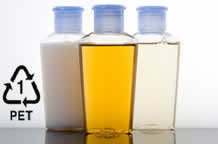
PET containers are typically molded on the bottom or side with the number 1 surrounded by the triangular “chasing arrows” symbol and the acronym PET or PETE below the triangle. Only PET carries the #1 identification code.
Why is PET sometimes called polyester?
PET, or polyethylene terephthalate, is the chemical name for polyester. When PET is used for fiber or fabric applications, it is usually referred to as “polyester.” When used for container and packaging applications, it is typically called “PET” or “PET resin.”
Uses for PET
Why do so many soda and bottled water companies use PET bottles rather than glass?
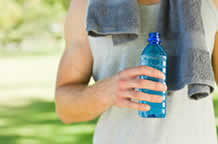
Like glass, PET is hygienic, strong, resistant to attack by micro-organisms, does not react with foods or beverages, and will not biologically degrade. Its safety for food and beverage use is recognized by health authorities around the world. But unlike glass, PET is extremely lightweight, simple to transport and won’t break, which is why it’s preferred for packaging many foods and beverages.
Can a PET water bottle be refilled and reused?
Yes. PET bottles are cleared for both single and repeated use by the FDA and other world health-safety agencies. It’s a common misconception that refilling or reusing a PET bottle will somehow cause the bottle to degrade or to release harmful substances. PET is a stable, inert material that doesn’t biologically or chemically degrade with use, and is resistant to attack by micro-organisms. Regulatory authorities have tested PET bottles and found no harmful substances in either new or re-used PET bottles.
How do I clean PET bottles for re-use? I’m concerned about accidental bacteria growth.
Although PET bottles are approved for both single and repeated use, the refilling and re-use of any bottle first requires careful cleaning. Always use soap and hot water. Dry thoroughly to make sure it is free of any moisture that might promote bacterial growth. Consumers should avoid re-using any bottle that has been scratched inside, since bacteria can become lodged in scratches.
How do I know PET containers are safe for the things I eat or drink?
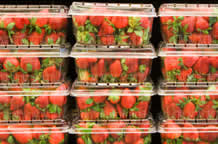
PET is a biologically inert material that doesn’t react with foods or beverages and is resistant to attack by micro-organisms. It’s been thoroughly reviewed and approved as safe for contact with foods and drinks by the FDA, Health Canada, the European Food Safety Authority and other health-safety agencies. It has also been used by consumers around the world for more than 30 years without any known adverse effects. Extensive testing of PET and PET packaging has repeatedly shown it to be safe. PET itself is biologically inert if ingested.
Can PET be used to package beer?
It depends on the shelf-life requirements. The grades of PET used for soft drinks don’t quite have the oxygen barrier properties needed to maintain a beer’s optimum taste quality over its typical shelf-life. However, beer packaged in single-serving PET bottles is becoming more and more popular at concerts and sporting events. Because the beer is bottled specifically for these events and consumed on the premises, there’s no time for beer quality to deteriorate. New technology to meet the longer shelf-life needs of beer and wine continues to be introduced into the marketplace.
Are PET containers made for use in the oven or microwave different from PET containers used for beverage bottles and food jars?
Yes. Special grades of PET are used for take-out food containers and prepared food trays that can be warmed in the oven or microwaved. These “dual ovenable” trays and containers have the same basic chemical formula as PET bottles and jars, but have special additives that crystallize and toughen the PET so it can withstand the much higher temperatures of oven and microwave heating. Ovenable PET is approved as safe by the FDA and other health-safety agencies around the world.
PET Safety
Is PET safe? Is it approved by the FDA or other health-safety agencies?
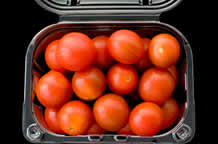
PET has been approved as safe for contact with foodstuffs and beverages by the FDA, Health Canada, the European Food Safety Authority and virtually every other health-safety agency in the world. It has been used for food and beverage containers for decades without any known adverse effects. Extensive studies of PET and PET packaging have repeatedly shown it to be safe.
Does PET react with foods or beverages?
No. PET is a very stable, inert material that doesn’t react with foods or beverage and is resistant to attack by micro-organisms. PET itself is biologically inert if ingested.
Do PET bottles or containers contain BPA?
No. PET does not contain BPA. Bisphenol-A (BPA) is a compound used in polycarbonate, a different type of plastic that is sometimes used in baby bottles, the lining of metal cans, and reusable sports bottles. PET does not contain BPA and never has.
Can PET bottles that are left in a hot car or put in the microwave release dioxins?
No. PET does not contain dioxins, nor can it produce dioxins, and no dioxins are created in the manufacturing of PET. Dioxins are a group of compounds sometimes formed by high-temperature combustion (over 750 degrees F.) and certain types of industrial processes involving chlorine. Dioxins can’t be created without the presence of chlorine, and PET does not contain chlorine. Consequently, dioxins can’t be produced when a PET container is heated or microwaved, exposed to sunlight, or washed and reused (all urban myths).
Does PET contain phthalates?
PET contains no phthalates. Phthalates (i.e., phthalate ester plasticizers) are not used in PET, and PET is not a phthalate. Plasticizer phthalates are sometimes used to soften other types of plastic, but they are not used in PET. Some consumers may have incorrectly assumed that PET is a phthalate because PET’s chemical name is polyethylene terephthalate. Despite the suffix, PET is not a phthalate. Phthalates are low molecular weight monoesters made from ortho-phthalic acid. By comparison, PET is a high molecular weight polyester made from tere-phthalic acid. Chemically they are very different.
Does PET contain endocrine disruptors?
No. PET contains no known endocrine disruptors, and there is no credible scientific data to suggest that PET produces estrogen or endocrine modulating activity. Studies that exposed both male and female laboratory animals to terephthalates during all phases of the reproductive cycle found no reproductive or developmental effects in either the test animals or their offspring.
There have been reports identifying antimony as a human carcinogen. Is this true, and should I be concerned about antimony in PET?
No. Human caner risk from antimony is low where there is low exposure to antimony. Therefore, this includes plastic products. Migration out of the plastic occurs only at trace amounts, if at all.
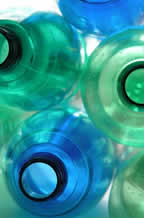
Why are trace amounts of antimony compounds found in PET bottles? Is this safe?
Very small amounts of antimony compounds are used in the production of both PET and glass. Antimony oxide is typically used as the catalyst in making PET, which is chemically bound into the polymer at very low levels. Over time and with extended exposure to heat, trace amounts of antimony may migrate into water or other beverages bottled in PET. Laboratory tests on the migration of antimony compounds from PET have consistently found these levels far below all safety thresholds – typically less than 1/40th of the World Health Organization’s daily safe-consumption level for drinking water.
I’ve heard that a hot environment can create harmful levels of antimony oxide in PET-bottled water. Is that true? Should I be concerned?
There is no reason for concern. No studies have found any toxic amounts of antimony in PET-bottled water or containers. Unfortunately, there has been some consumer misunderstanding of studies showing higher-than-normal levels of antimony when water bottled in PET was exposed to extreme heat (176 degrees F) for extended periods of time. Even then, the highest measured levels paralleled established safe levels for antimony in drinking water. In short, the very small amounts of antimony that might be found in PET-bottled water are of no concern and do not pose any health risk.
Recycling & Sustainability
Can PET bottles and containers be recycled?
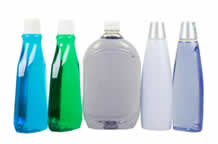
Absolutely. PET is recyclable and highly sustainable. It can be recovered and recycled again and again –– back into containers for foods, beverages and personal care products – or into carpet and clothing fibers, automotive parts, construction materials, industrial strapping or other packaging materials. Approximately 1.5 billion pounds of used PET bottles and containers are collected in the U.S. each year for recycling. PET is the most recycled plastic in the U.S.
What process is used to recycle PET?
PET can be recovered, and the material reused, through a series of special washing processes or by a chemical treatment to break down the PET into its raw materials or intermediates, which are then purified and converted into new PET resin.
Can I put PET containers in my recycling barrels for curbside collection?
Yes. Virtually every municipal recycling program in North America and Europe accepts PET bottles and containers, which can be easily identified by a triangle-shaped symbol and the number “1” stamped or molded into the bottom or side of the container.
What kinds of products are made from recycled PET?
Bottles, jars and other containers made of PET can be collected and recycled into a wealth of products. PET can be recycled into new PET bottles and containers, carpet and clothing, industrial strapping, rope, upholstery fabrics, boat sails, automotive parts, fiberfill for winter jackets and sleeping bags, construction materials, and many other items.
How can PET have a positive environmental profile if its raw materials are petroleum-based?
PET is a remarkably energy-efficient packaging material, with an environmental impact that compares very favorably to glass, aluminum and other container materials. Although PET’s feedstocks are derived from crude oil and natural gas, approximately 40% of that energy is trapped within the PET polymer for recapture and reuse every time PET is recycled. And because PET is very strong yet lightweight, it allows more product to be delivered with less packaging, less weight and less fuel for transport. These factors help explain why life cycle studies of PET have consistently shown it to be a highly sustainable material with a positive environmental profile.
What happens to PET bottles and containers that aren’t recycled and end up in landfills?
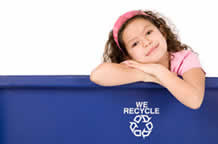
Because PET is resistant to attack by micro-organisms and won’t biologically degrade, PET bottles and containers that find their way to the landfill remain inert and pose no risk of leaching or contaminating groundwater. PET bottles and containers are thin walled and can be easily crushed flat, so they take up relatively little landfill space. According to the EPA, only 1% of U.S. municipal solid waste is attributed to PET containers.
How do the recycling rates of the United States and Europe compare?
Although the PET recycling rate continues to grow in both the United States and Europe, the Europeans seem more attuned to the value of recycling packaging materials. The U.S. recycling rate for PET was approximately 31% in 2012. By comparison, the 2012 PET recycling rate in Europe was 52%.
Can new PET bottles be made from recycled PET?
Yes. Recycling used PET bottles and jars into new food-grade PET bottles and containers is a key example of the environmental benefits and sustainability of PET as a packaging material. The development of modern and efficient plants dedicated to the closed-loop recycling of PET bottles continues to increase around the world.
